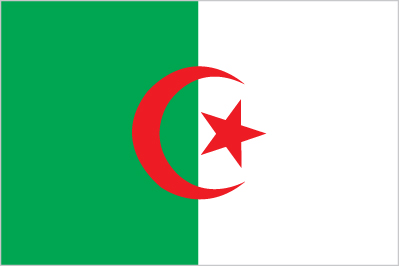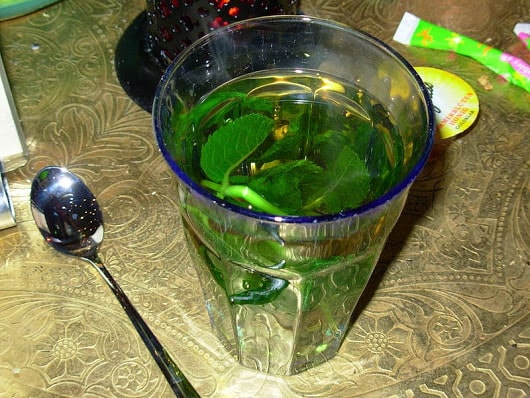Last updated on May 15th, 2022
36. The 8th and 11th centuries AD saw the arrival in Algeria of Islam and with it the Arabic language. The introduction of both had a significant impact on all the Maghreb (North African) people with changes in economic and social relationships and the establishment of links with a rich and well-established culture.
37. Algeria’s political history is interesting and full of conflict. More than a million Europeans were captured and then sold as slaves in North Africa. France conquered Algeria in 1830 and the practice stopped. France ruled Algeria until 1962.
38. The modern borders of Algeria were established by the French during their colonization. Though France controlled the entire country, the traditional Muslim rural communities remained separated from the French’s economic infrastructure and the European community in their country.
39. The French in Algeria were known as Colons (colonists) or pieds noirs (black feet) and they controlled both the government and the majority of the country’s wealth. Political unrest in the 1930s made the Colons burden the people with more restrictive laws.
40. The Algerians Muslims did fight with the French in World War I and World War II but from 1954 to 1962 Algeria was engaged in a fight with France for their independence that was bloody and long. It resulted in more than a million Algerian deaths. The conflict involved many atrocities, including guerrilla warfare, terrorism and counter-terrorism, and torture.
41. Algeria’s modern flag was designed to symbolize very specific points. The colors are green, red and white. The green, believed to be the Prophet Muhammad’s (P.B.U.H) favorite color, represents Islam and paradise (nature). Red symbolizes the deaths and sacrifice of all those who fought for Algeria’s independence, and for liberty. White symbolizes purity and peace. To be acceptable for the flag, the exact wavelength that each color must absorb is specified officially, which is highly unusual for an African country’s flag.
Flag of Algeria

42. The current Algerian flag was adopted on 3 July 1962.
43. Algeria mediated negotiations between Iran and the U.S. in 1980 to liberate the Americas hostages Iran kidnapped from the American embassy. This led to the signing of the Algiers Accords and the prisoners’ release.
About Algerian cuisine
44. Algerian cuisine has been influenced by the ancient cultures and various countries that have visited and/or ruled it. The Berbers brought wheat cultivation and were the first to create couscous which is the country’s national dish. The Romans brought barley and other grains. Vegetables such as potatoes, tomatoes, chilies, and zucchini came from the New World.
45. Muslim Arabs introduced exotic spices like cloves, saffron, ginger, cinnamon, and nutmeg from Indonesia’s Spice Islands. Olives and olive oil, as well as peaches, plums, and oranges, came with the Spanish. Tea came from European traders.
46. When the French arrived, they forced the Algerians to surrender their land and crops to them. In return, the French introduced their culture and cuisine to the Algerians, including sidewalk cafes, as well as their crusty long loaves of bread, eaten daily in the country even now.
47. Today traditional Algerian cuisine is a colorful combination of Turkish, Berber, Arab and French influences and tastes. Flavors may be packed with seasonings or extremely mild. Essential pantry supplies include mint, cinnamon, parsley, cumin, garlic, coriander, ginger, saffron, onion, parsley, garlic, and onion.
48. Algeria produces its own citrus fruit, grapes, cherries, figs, wheat and famous dates, which some regard as the best in the world. They just can’t produce enough for all their people, so 45 percent of their food must be imported.
49. There are three key Algerian dishes (one is a range of drinks, actually). One is couscous, a pasta-like dish made from semolina wheat. It is served as a bed for chicken, meat, lamb, and vegetables. It can even be a dessert with a topping of cinnamon or other toppings.
50. Another is Mechoui. This is a whole roasted lamb cooked on an outdoor spit, prepared for large group gatherings. Seasoned with herb butter, the skin turns crispy while the meat inside is cooked tender and juicy. It is usually served with vegetables and dried fruits as well as bread.

51. Etzai, the mint tea popular all over North Africa, is the favorite gift. Alcohol is forbidden for Muslims. Coffee with cardamom is another drink. Children like to drink apricot nectar. Fruit or nut-flavored milk drinks called Sharbats are also popular.
52. Meals are eaten at a leisurely pace and are sociable occasion. Food like couscous is traditionally eaten with the thumb, forefinger and middle finger of the right hand. Never use more than three fingers or you are displaying greed. Never eat with the left hand, which is considered unclean. Leaving a little on your plate is considered a sign that your host is able to amply provide for your needs.
53. The atmosphere at the table in a middle-class family may be a bit more elegant. A servant or young family member may offer each guest a bowl of perfumed water for washing their hands before dining.
Algeria – country at a glance
| Independence | 5 July 1962 (from France) |
|---|---|
| Capital City | Algiers (36°42′N 3°13′E) |
| Largest City | Algiers (36°42′N 3°13′E) |
| Area | total: 2,381,740 sq km land: 2,381,740 sq km water: 0 sq km |
| Area - comparative | slightly less than 3.5 times the size of Texas |
| Population | 47,022,473 (2024 est.) |
| Population growth rate | 1.54% (2024 est.) |
| Demonym | Algerian |
| Official Language | Arabic and Berber |
| Literacy | total population: 81.4% (2018) |
| Suffrage (the right to vote in political elections) | 18 years of age; universal |
| Government type | presidential republic |
| President | Abdelmadjid Tebboune |
| Prime Minister | Nadir Larbaoui |
| Borders | Mauritiana, Mali, Niger, Libya, Tunisia, Morocco and Western Sahara |
| Currency | Dinar (DZD) |
| Religion | Sunni Islam |
| Life expectancy at birth | 77.9 years (2024 est.) Life expectancy at birth indicates the number of years a newborn infant would live if prevailing patterns of mortality at the time of its birth were to stay the same throughout its life. |
| Birth rate | 20.2 births/1,000 population (2024 est.) |
| Death rate | 4.4 deaths/1,000 population (2024 est.) |
| Sex ratio | 1.03 male(s)/female (2024 est.) |
| National symbol | star and crescent, fennec fox |
| National colors | green, white, red |
| National anthem | "Kassaman" (We Pledge) |
| Terrain | mostly high plateau and desert; some mountains; narrow, discontinuous coastal plain |
| Mean elevation | 800 m |
| Lowest point | Chott Melrhir -40 m |
| Highest point | Tahat 2,908 m |
| Natural resources | petroleum, natural gas, iron ore, phosphates, uranium, lead, zinc |
| Agricultural land | 17.3% |
| Industries | petroleum, natural gas, light industries, mining, electrical, petrochemical, food processing |
| Exports | $58.816 billion (2023 est.) petroleum, natural gas, and petroleum products 97% (2009 est.) |
| Imports | $51.516 billion (2023 est.) capital goods, foodstuffs, consumer goods |
| GDP - per capita (PPP) | $15,200 (2023 est.) |
| Internet country code | .dz |
| Time Zone | CET (UTC+1) |
| Calling Code | +213 |
| Drives on the | Right |
| Table last updated | February 21, 2025 |
